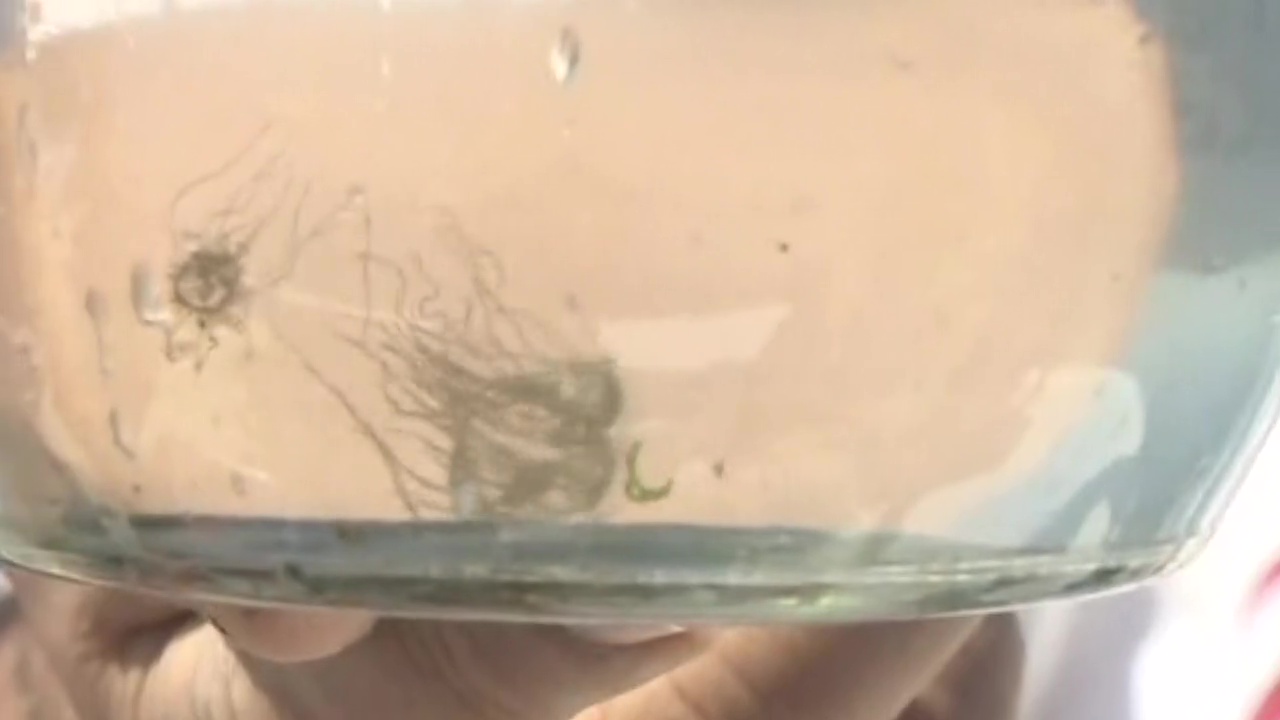[ad_1]
BARNEGAT BAY, N.J. (CBSNewYork) – There’s a new type of jellyfish stinging its way into the back bays and rivers along the Jersey Shore.
CBS2’s John Elliott went out on Barnegat Bay Thursday with some researchers from Montclair State University to trap and track this new floating pest.
READ MORE: Mayor De Blasio Announces More Funding For Anti-Hate Initiatives Amid Increase In Anti-Asian, Anti-Semitic Attacks
Elliott and those researchers went jellyfish hunting.
“So this is Gonionemus vertens. It’s also called the clinging jellyfish. It’s a small, invasive hydrozoan, or type of jellyfish, from the Pacific,” one researcher told Elliott.
Even though it’s early in the season, half way through their third net dip of the morning, they captured 40 of the tiny terrors, Elliott reported.
“I think it’s important for people to know how dangerous these are, and they are in water that people swim in,” another researcher said.
READ MORE: Greenpoint Community Demands Changes To McGuinness Boulevard After Beloved Teacher Is Killed In Hit-And-Run

(credit: CBS2)
Even though they’re a lot smaller than the lions mane jellyfish and cannonball jellyfish you see in the ocean, but in many respects, they’re more dangerous.
“They have pretty tough paralysis toxins, and that’s what generally people complain most about. A sort of massive muscle cramp and pain affiliated with these paralysis toxins,” a researcher said.
“We’re putting ourselves in danger to keep people out of danger,” said another.
“If they’ve think they’ve been stung, one of the things we always do, we carry something called Sting No More. But if you’ve got white vinegar, we often recommend that. What white vinegar does is it immobilizes any of the stinging cells that haven’t fired yet. And this is something we want to make sure that our health care facilities and our health care workers also know because those are the types of things to ask the right questions, in terms of the right treatments,” a researcher said.
“When you don’t know there’s danger in the water, you’re very comfortable with your surroundings. And you’re not cautious. So it’s important to educate the public on what is in the water with them,” said another.
MORE NEWS: 4 Women Hospitalized With Critical Injuries After Early Morning Fire In Queens
Elliott says the best way to see where the clinging jellyfish are showing up is check out the maps on New Jersey Jelly Spotters on Facebook. To do so, CLICK HERE.
[ad_2]
Source link